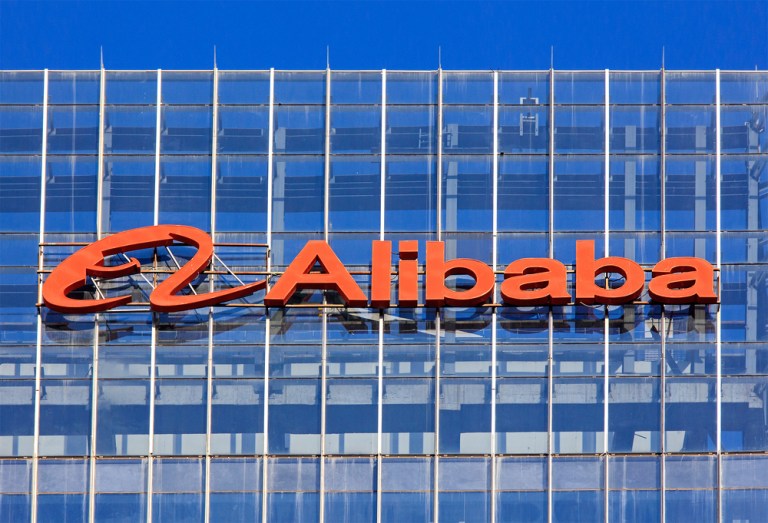Alibaba Tracker: Alibaba Vs. Tencent

In a saturated eCommerce market, Chinese eCommerce giant Alibaba and its biggest competitor, Tencent Holdings Limited, have their eyes on diversification, and Alibaba is losing ground.
Like their American counterpart Amazon, Alibaba and Tencent are fashioning themselves identities that have less and less to do with online shopping and more to do with an integrated life approach. The latest additions? Food delivery and mobile payments at even more physical stores.
Alipay, Alibaba’s mobile payment platform, released a version in Hong Kong dollars this week. Previously, payments could only be made in yuan. 2,000 Hong Kong stores will now accept payments through the AlipayHK app, with more than 8,000 slated for conversion from the yuan platform.
Alibaba took an 18 percent stake in supermarket and convenience store operator Lianhua Supermarket Holdings, catapulting the company’s stocks as much as 34 percent during Monday morning trading (May 29). After the initial agreement in February, Lianhua said it expected the partnership to yield new technologies and integrations of logistics and payments.
Alibaba and its financial services arm, Ant Financial, are investing over $1 billion in Chinese food delivery service Ele.me. The investment will value Ele.me at $5.5 billion to $6 billion and help it compete against Tencent’s food delivery service, Meituan Dianping.
So far, Alibaba looks like the clear winner. But Tencent also has irons in Ele.me’s fire and Bloomberg News reports that the rising eCommerce star hopes to ramp up investment. It’s too soon to say whether Alibaba’s investment will give it an edge.
Alipay said it will be expanding mobile payment service to users in America. The service has 450 million global active users and has teamed up with Atlanta-based credit card processing service First Data to grow that number even more, by giving Americans (and Chinese tourists in America) mobile payment options at four million U.S. stores.
But in that arena, too, Tencent got there first. Tencent’s WeChat payment platform has partnered with Silicon Valley mobile payment company CitCon, and it’s targeting the same demographic (although Alipay does plan to make a concerted pitch to millennials with a Paris Hilton-championed retro marketing campaign).
Alibaba’s market share in digital payments dropped by close to half by the end of 2016. Tencent’s, meanwhile, had climbed by more than one third.
Alibaba has a plan. President Martin Lau reported during a May earnings conference call that the company is looking to restaurants as the next frontier to conquer. Alibaba already offers mobile booking for salon and spa appointments, cloud computing, wealth management, insurance services and more.
Although the company is neck-and-neck with Tencent in terms of new growth, Alibaba still controls 54 percent of the total market shares, with Tencent not even close to closing in at 37 percent. Ant Financial claims that Alipay’s number of daily users doubled in 2016. Still, the advances made by Alibaba’s number one competitor in 2016 were not insignificant.
On the other side, Alibaba is feeling pressure from eCommerce competitor JD.com. Alibaba announced last Tuesday (May 23) that it would be manufacturing one million smart delivery vans equipped with artificial intelligence technology — a counterpoint to JD’s announcement that it’s working on delivery drones that can handle over one ton of cargo.
Alibaba projects that the introduction of smart vans could save it up to $1.45 billion a year in delivery costs, while also making the service more efficient, as it routes drivers along the best routes based on real-time traffic information. It will also make service to rural areas more practical, whether customers are receiving or sending (such as farmers selling produce to the cities).
During a beta test, the smart vans reduced vehicle use by 10 percent and slashed travel distance by 30 percent.
On the other side of the pond…
Amazon shares just broke $1,000 for the first time ever after posting revenue of $35.7 billion in April, dramatically topping estimates. Sales were up 23 percent this quarter, and Amazon Web Services increased 42 percent.
Amazon also launched its Fresh Pickup service this week, where AmazonPrime customers can order their groceries ahead of time and come pick them up at two Seattle locations, where smart cameras will ID their license plate for even faster service. Prime members who pay the annual upcharge can pick up their order as soon as 15 minutes after it’s placed.
Recent trademark applications with the Intellectual Property Offices of the U.K. and European Union suggest that Amazon’s cashier-less grocery stores may be Europe-bound next.
And speaking of patents, Amazon received a patent on May 30 for a shipping label that incorporates a built-in parachute to ensure a soft landing for drone-delivered packages. The company has also been working on a system for ejecting packages from drones while they are in flight.
Drone delivery is still a ways off for Amazon — not least because of airspace restriction in the U.S. — but with a handful of related patents, it’s only a matter of time before Amazon turns another industry into something we never imagined.